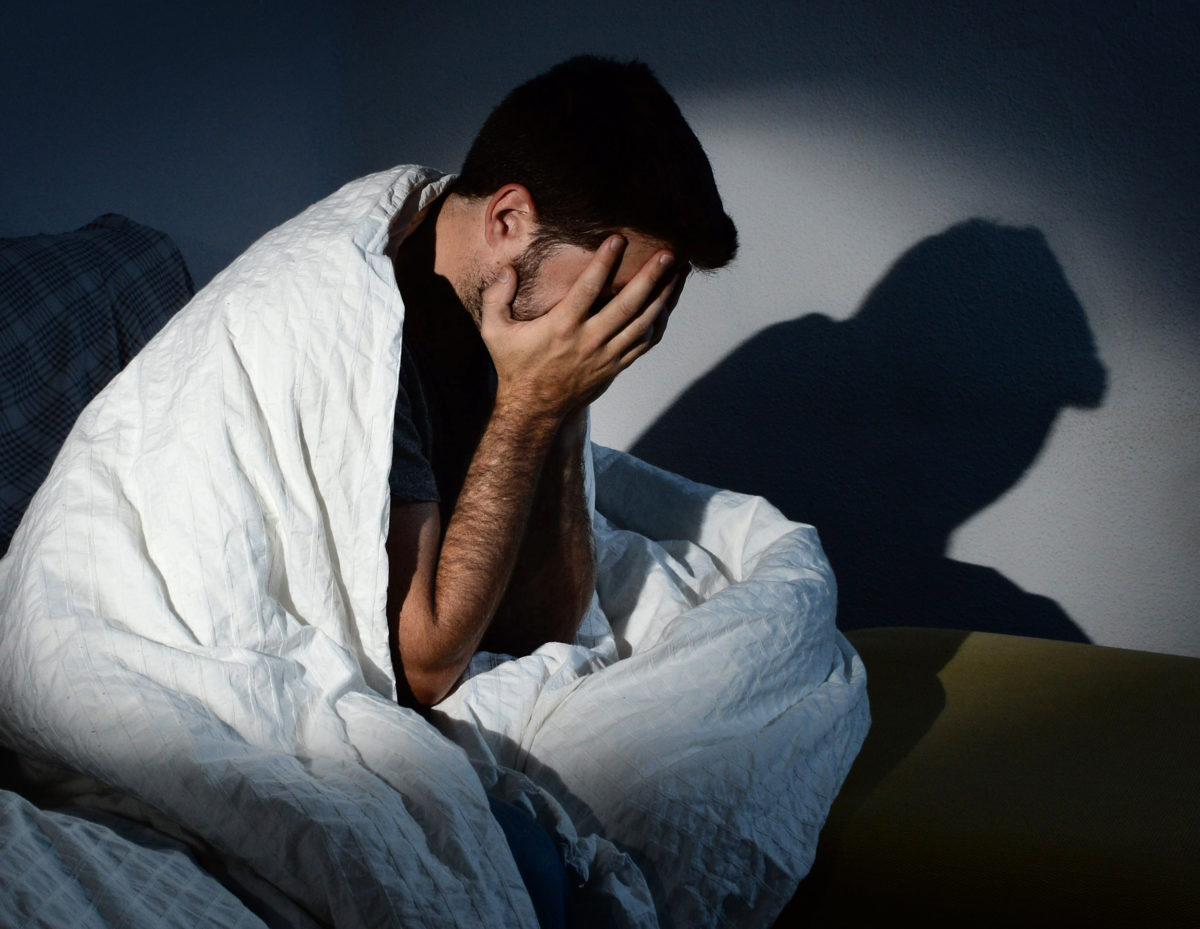All There Is To Know About the Withdrawal Symptoms of These Six Drugs
Anyone is capable of becoming an addict as long as he or she is exposed to a prescribed medication or illegal drugs that are habit-forming. Some people are predisposed to develop addictive behavior when introduced to various drugs. Thus, you need to examine your family history to make sure that you do not fall within this category. The reason behind this is that people who are predisposed are likely to become addicted faster and easier in comparison to other people.
There are varying types of addicts. They vary depending on the substance they ingest. These rug substances are ingested for various reasons and they have different effects on the body. This means that if a person develops an addiction, he or she will experience different withdrawal symptoms when they fail to keep up their daily drug dosages.
When people seek help in rehabilitation centers, they have to go through a number of programs to help their body wean off the drug addiction. The main part of the program is the detoxification program. This is also the most dreaded part of the program because of the uncomfortable pain inflicted on the body. it is painful because the person is exposed to withdrawal symptoms as the rehabilitation center weans the person off the drug.
Before your loved one checks into a rehabilitation center, it is important that they are mentally and psychologically prepared for what they might experience during the program. This read aims at providing some insight into the likely withdrawal symptoms your loved one might experience during their detoxification program. Below is a list of drugs with the withdrawal symptoms that are specific to the drugs listed below.
- Benzodiazepines
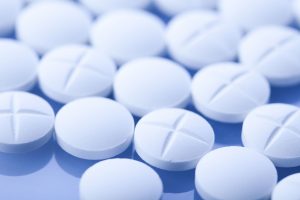 Have you ever heard of the famous “date-rape drug”? Well, this is it. It impairs the cognitive function of the body causing the person to lose consciousness. It is also known by the street names benzos, tranx, sleepers, downers, pills, serras, moggies and normies. It is used to treat alcohol withdrawal symptoms and other health issues such as amnesia-inducing, used before surgery, Anxiety treatment, Insomnia, control of seizures, and relaxation of muscles. You could classify them under tranquillizers, specifically minor tranquillizers. You can find them prescribed under the name diazepam (Valium), lorazepam (Ativan), clonazepam (Klonopin) or alprazolam (Xanax).
Have you ever heard of the famous “date-rape drug”? Well, this is it. It impairs the cognitive function of the body causing the person to lose consciousness. It is also known by the street names benzos, tranx, sleepers, downers, pills, serras, moggies and normies. It is used to treat alcohol withdrawal symptoms and other health issues such as amnesia-inducing, used before surgery, Anxiety treatment, Insomnia, control of seizures, and relaxation of muscles. You could classify them under tranquillizers, specifically minor tranquillizers. You can find them prescribed under the name diazepam (Valium), lorazepam (Ativan), clonazepam (Klonopin) or alprazolam (Xanax).
Their use should be restricted to a short period because they are highly addictive. They are likely to cause the following withdrawal symptoms when their use is restricted. The symptoms kick in within the first twenty-four hours and can run for weeks to months depending on your level of dependence.
- Sleep issues
- Anxiety and unnecessary tension
- Hand tremors
- Panic attacks
- Nausea
- Weight loss and appetite issues
- A headache
- Muscular pain
- Concentration and focus issues
- Heart palpitations
- Confusion
- Sweating and shaking
- Panic attacks
- Barbiturates
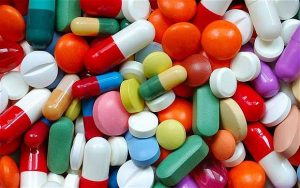 A sedative has been used since the early 1990s to treat sleep disorders and related mental issues. It depresses the central nervous system causing instant sleep. It was also initially used to treat seizures and anxiety disorders. This is a very dangerous drug because the dosage is not easy to establish, thus it is very easy to overindulge. A simple dosage can make someone fall into a coma or even die. The following names are used to identify this drug: tuinal, Seconal, Nembutal, barbs, downers, blues, reds, sekkies, sleeping pills, sleepers, amytal, seonal, goofballs, and Christmas trees.
A sedative has been used since the early 1990s to treat sleep disorders and related mental issues. It depresses the central nervous system causing instant sleep. It was also initially used to treat seizures and anxiety disorders. This is a very dangerous drug because the dosage is not easy to establish, thus it is very easy to overindulge. A simple dosage can make someone fall into a coma or even die. The following names are used to identify this drug: tuinal, Seconal, Nembutal, barbs, downers, blues, reds, sekkies, sleeping pills, sleepers, amytal, seonal, goofballs, and Christmas trees.
After taking a dosage, the person might feel the withdrawal symptoms within an estimated period of eight to sixteen hours. The symptoms can stretch on to about fifteen days. However, take note that as the days go by the symptoms get less severe thus, prepare for severe withdrawal symptoms at the beginning of the period. They are highly addictive and can lead to severe and life-threatening withdrawal symptoms such as:
- Irritability
- Nervousness
- Delirium
- Sleeplessness
- Fainting
- Nausea
- Twitching
- Tremors
- High blood pressure
- Sweating
- Seizures
- Muscle pain
- Confusion
- Hallucinations
- Nightmares
- Insomnia
- Vivid dreaming
The effects of using this drug include breathing disorders, sexual dysfunction, slowed reflexes, dizziness, vision problems, chronic tiredness, drowsiness, lack of inhibition, mild euphoria, irritability, impaired judgment, dilated pupils, and lack of coordination, disorientation, fatigue, sluggishness, shallow breathing, and slurred speech.
- Antidepressants (SSRIs)
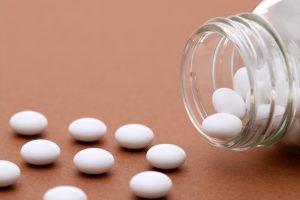 The SSRIs stands for Serotonin Specific Reuptake Inhibitors. Have you ever been treated for anxiety and depression? If you have then you are likely to have come across this drug. However, most doctors do not like prescribing it because of its addictive nature. They prescribe it as a last resort. Therefore, when it is prescribed, the doctors limit the prescription to less than six months. Prolonged use causes the person to develop a dependence on the SSRI. The withdrawal symptoms could last for two days or weeks depending on the SSRI you were taking some SSRIs are more likely to make a person develop an addiction.
The SSRIs stands for Serotonin Specific Reuptake Inhibitors. Have you ever been treated for anxiety and depression? If you have then you are likely to have come across this drug. However, most doctors do not like prescribing it because of its addictive nature. They prescribe it as a last resort. Therefore, when it is prescribed, the doctors limit the prescription to less than six months. Prolonged use causes the person to develop a dependence on the SSRI. The withdrawal symptoms could last for two days or weeks depending on the SSRI you were taking some SSRIs are more likely to make a person develop an addiction.
The side effects of using this drug include mild agitation, mild lethargy, dry mouth, suicidal thinking, profound lethargy, agitation, stomach upset, tics, rashes, mood swings, sexual side effects and nausea. Expectant and lactating mothers are advised against indulging in the consumption of this drug as it puts both the mother and the baby(s) life in danger.
The most common withdrawal symptoms are:
- Death from suicide
- Suicidal thinking
- Depression
- Severe agitation
- Severe mood disturbance
- Symptoms resembling that of the flu such as chills and achy muscles
- Lethargy
- Agitation
- Headaches
- Stomach upset
- Anabolic steroid addiction
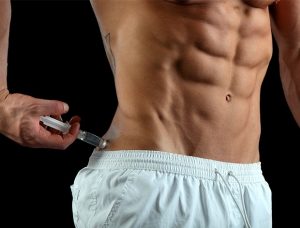 This drug is similar to the male testosterone hormone that naturally develops in the body. Thus, it is prescribed to people who have low levels of testosterone in their body. Additionally, it is used to enhance performance and has been reportedly sued by athletes to boost their performance during championships. This is because this drug has the ability to boost growth, development, energy, and stamina of the muscles in the body.
This drug is similar to the male testosterone hormone that naturally develops in the body. Thus, it is prescribed to people who have low levels of testosterone in their body. Additionally, it is used to enhance performance and has been reportedly sued by athletes to boost their performance during championships. This is because this drug has the ability to boost growth, development, energy, and stamina of the muscles in the body.
Health effects you are likely to experience when consuming this drug include Cysts, Yellow eyes and skin, Acne, Liver disease, Greasy hair, Greasy skin, Shrunken testicles in men, Liver cancer, Breast growth in men, Erectile dysfunction in men, Decreased breast size in women, Heart disease and heart attack, Internal bleeding. Additionally, Irregular periods in women, a Deep voice in women, Facial hair growth in women, Hair thinning, Premature ageing of bones, Male pattern baldness, and Diseases that are associated with the transmission of needles such as Hepatitis B&C and HIV/AIDS are also some of the likely effects.
If a person stops their intake, they are likely to experience the following withdrawal symptoms:
- Frustration
- Muscle cramps
- Headaches
- Mood swings
- Low sex drive
- Restlessness
- Cravings for the drug
- Loss of appetite leading to weight loss
- Fatigue
- Insomnia
- Low motivation
- Severe depression which can lead to suicide
- Amphetamines
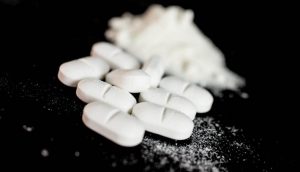 This stimulant was initially used as a decongestant and a suppressor. The soldiers used them during wars to keep them alert and active even though they had not slept for days. They are known by the names “uppers” and “speed”. They are available as prescription drugs and sold illegally in the black market. Amphetamines affect the neural functions of the body. They increase the speed of the transmitters within the body making the person more alert and active for longer periods. It is an effective treatment plan for health issues such as ADHD and narcolepsy.
This stimulant was initially used as a decongestant and a suppressor. The soldiers used them during wars to keep them alert and active even though they had not slept for days. They are known by the names “uppers” and “speed”. They are available as prescription drugs and sold illegally in the black market. Amphetamines affect the neural functions of the body. They increase the speed of the transmitters within the body making the person more alert and active for longer periods. It is an effective treatment plan for health issues such as ADHD and narcolepsy.
It is ingested by sniffing or injecting into the body. These modes are very risky as they can block the blood vessels if the particles of the amphetamines are not dissolved completely. A person is likely to experience the following effects when using this drug: decreased appetite, death, collapse, strokes, heart failure, high fever, seizures, loss of coordination, tremors, chest pain, irregular heartbeat, dizziness, blurred vision, headaches, sweating, jaw clamping, dilated pupils, increased blood pressure, and an increased heart rate and breathing rate.
The withdrawal symptoms of this drug begin a few hours after its discontinuation and can last for some days. The severity of the symptoms keeps getting worse with time, making it unbearable to function without it. This sends the addict back to the drug as soon as possible. If a person stops their use of amphetamines, they are likely to experience the following withdrawal symptoms:
- Lack of pleasure from normally pleasurable activities such as sex, hobbies, talents, and even food, among other things
- Lethargy or physical agitation
- Appetite issues
- Nightmares that are vivid
- Fatigue
- Depression and anxiety (Mood change)
- Poor judgment and decision-making: This is mainly because of the severity of the symptoms that cause the person not to function normally. This distorts their neural functionality.
- Lack of a facial expression or voice tone
- Suicidal thoughts
- Pale skin
- Poor eye contact
- Slow physical reflexes
- Khat addiction and abuse
 This green leaf shrub originates from Southern Arabia and native East Africa. It is called Catha edulis. It contains two alkaloids, namely cathine and cathinone. The effects of this stimulant are similar to those of the amphetamines. It was originally used to treat fatigue, stomach ulcers, depression, performance enhancement, appetite, and sleep disorders. There are different strains to this drug. Each strain has a varied effect on the body. For example, some of the strains stimulate the body functions, while others induce sleep.
This green leaf shrub originates from Southern Arabia and native East Africa. It is called Catha edulis. It contains two alkaloids, namely cathine and cathinone. The effects of this stimulant are similar to those of the amphetamines. It was originally used to treat fatigue, stomach ulcers, depression, performance enhancement, appetite, and sleep disorders. There are different strains to this drug. Each strain has a varied effect on the body. For example, some of the strains stimulate the body functions, while others induce sleep.
Expect the following effects when using it: An increased heart rate, breathing rate, and blood pressure, Insomnia, loss of energy, and lack of concentration, Psychosis, paranoia, and manic behavior, Anxiety, Aggressiveness, Appetite suppression, increased arousal and mental alertness, Feelings of well-being and a state of elation and euphoria
The withdrawal symptoms include:
- Anxiety and depression
- Irritability
- Lethargy
- Tension
- Lack of focus
- Lack of sleep
- Mood swings
- Hallucinations
- Nightmares
- Shakiness
The effects of using this drug can last for up to three hours. It is introduced into the body through food or smoking. Khat is categorized in the same class as cocaine. Using it for a long period could cause the following effects on the body tooth decay, periodontal disease, ulcers, stomach inflammation, and irregular heartbeat, myocardial infarction, worsening of the psychiatric conditions that pre-existed, serious liver damage, insomnia, anxiety and irritability.
The treatment method should address habit-forming, psychological, and physical effects of this drug. It can combine addiction therapies to meet all these needs. The patient must be willing to cooperate for the benefit of improving their health and ending their dependence.
- Synthetic hallucinogens
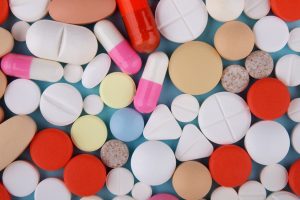 They are also known as Smiles, Europe, NBOMe, N-Bomb, 2c-E, 25I, 25C, and 25B.synthetic hallucinogens are used to mirror the effects of classic hallucinogens such as LSD. They are rarely used singularly. Most of the time, they are added to designer drugs such as ecstasy. This makes it harder t predict the effects of the drug since there is no standard effect of this additive.
They are also known as Smiles, Europe, NBOMe, N-Bomb, 2c-E, 25I, 25C, and 25B.synthetic hallucinogens are used to mirror the effects of classic hallucinogens such as LSD. They are rarely used singularly. Most of the time, they are added to designer drugs such as ecstasy. This makes it harder t predict the effects of the drug since there is no standard effect of this additive.
The side effects of taking them to include;
- Gastrointestinal issues
- Facial stiffness
- Blurred vision
- Tremors
- Headaches
- Seizures and convulsions
- Respiratory distress
- Cardiac issues such as heart rate and increased blood pressure
- Hallucinations
- Impaired decision-making
- Motor impairment
- Disorientations and confusion
- Death caused by the secondary and primary effects
The withdrawal symptoms you are likely to note are:
- Bizarre behavior that resembles that of a person who suffers from psychosis and or paranoia
- Intense drug cravings
- Sleep issues
- Tremors
- High risk of suicide commission
- Agitation
- Panic, anxiety, and depression
A person using this drug will have dilated pupils, decreased inhibitions, and serious issues when it comes to perceiving sensory information such as sight, hearing, and touch, and increased levels of sociability.
The best way to try to detect the above drug is through a urine and blood test. This will shed some light on the state of the muscle breakdown and kidney. These two are the most affected areas in the body for users of synthetic hallucinogens. After this, the doctor will monitor the physical signs of the patient. The withdrawal symptoms listed above will give some insight on the specific drug and consumption amount of the patient. The withdrawal symptoms are treated to stabilize the patient.
The Standard Guide of a Rehabilitation Center Program for Drug Users
As you visit a rehabilitation center to help you or your loved one with a drug addiction, make sure that you are aware of the withdrawal symptoms to prepare yourself mentally and psychologically for the testament. Afterwards, familiarize yourself with the system of the rehabilitation center. Most rehabilitation centers have varying treatment plans, but this read will provide a standard treatment plan that most rehabilitation centers follow. This will provide some insight. Take note that it is not conclusive and definite. You might miss some steps or have more.
- Physical examination or assessment: At the beginning of the rehab process, you will meet a physician. You will spend some time with him or her to examine your addiction status and map out a detoxification plan. This plan will vary depending on the drugs you were using during the addiction phase. Therefore, it is mandatory that you are very honest at this stage. Giving the wrong information will not help you get through your rehabilitation efficiently. You might also be asked to identify the recent drugs that you ingested. This could be prescribed or not. Thus, you might want to acquaint yourself with the names of those drugs. At this stage, you will be given various legal documents such as consent forms to fill. This stage takes a few hours, but it could spread out through a couple of days.
- Psychological examination/evaluation/assessment: A psychiatrist who has experience and expertise on addiction will examine various issues such as bipolar, depression, anxiety, or any other psychological or emotional issues. The first examination you do will not be conclusive. This is because you are still under the influence of drugs and at the peak of your addiction. This may taint the results significantly. A good example is some people exhibit schizophrenic properties when they are under the influence and after they are done with their rehabilitation, these symptoms end.
- Detoxification: This is the part of the program that addicts hate most. However, if you check in to a high-end rehabilitation centre it might be extremely comfortable for you. Withdrawal symptoms are inevitable. They will use medication like valium and suboxone to ease your pain. Since they do not want to create a dependency to this drug, they will only use it when necessary and for a short period. The aim of using them is to make sure that the addict is completely free from mood-altering drugs. The potential side effects include decreased appetite, amnesia, blackouts, and feelings of paranoia, aggressive behavior, panic attacks, tremors, blurred vision, gastrointestinal issues, headaches, seizures, convulsions, respiratory issues, high blood pressure, motor impairment, and even dilated pupils. A doctor will definitely be on standby to help you get through all these side effects. The side effects you experience are dependent on the drugs you used. Thus, make sure you enquire so that you do not go into shock ones the side effects start showing. Mental preparation goes a long way when it comes to this form of treatment.
- Therapy: The most effective form of therapy is done in a group setting. This does not single out individual therapy. It is still effective. Additionally, some people prefer to have individual counseling because of their status or other personal reservations. By talking and connecting with other people who feel the same way you do, you develop techniques that help you stay free from drug consumption.
- Fitness: Drugs make the body system deteriorate. It derails all health aspects making it hard to get through the addiction. Thus, through fitness, you can uplift your mind, soul and body. This is essential for their healing process. Exercise helps the addict get through the withdrawal symptoms since it helps the body produce endorphins that make the body feel good. You might need the help of a trainer to get through this stage. The rehabilitation centre could provide one unless you have reservations about a specific one and want to hire your own personal trainer.
- Good nutrition: Dieting goes hand-in-hand with fitness. In order to recover, you have to feel good and eat right. If you eat too much-processed carbohydrates, you will feel sleepy and sluggish. On the other hand, too much sugar will affect your moods. Thus, you will need to consult your nutritionist to plan your balanced diet and help you get in better shape.
- Alternative treatments: Many rehabilitation centers offer numerous alternative treatments. These treatments have been shown to help ease the withdrawal symptoms and make the addicts’ rehabilitation life more comfortable. These include acupuncture, equine therapy, yoga, massage, and meditation among others.
- Planning for aftercare: What is your plan after you leave the rehabilitation centre? How are you planning to stay on track with the treatment? How will you plan your home regimen to keep up with the treatment? What will you do if you get the urge to use drugs? All these questions are catered for under this part of the treatment. The plan caters for all the strategies that you need o address to remedy any situation you phase and the various relationships you are likely to phase when you get back home.
- Discharge from treatment: Your treatment is complete and you are at about thirty days free from drug or alcohol use. This day could be terrifying, joyous, or exciting. Follow the aftercare plan and all the tips and advice that you have received from the specialists. If you stay away from the triggers, you will have a better chance of long-term recovery.
